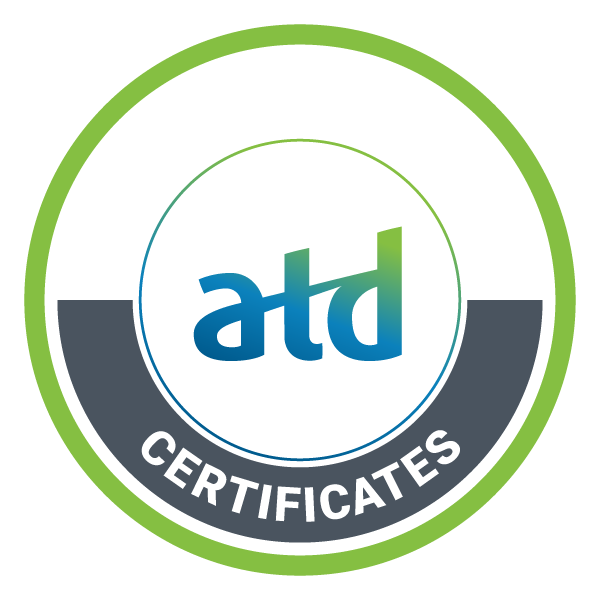The Latest
Displaying
439 Items
HBR IdeaCast
By ATD Staff on 1 May, 2025

Why Business Acumen Is Every Employee’s Competitive Edge
When employees build business acumen, they see how their work connects to the company’s success.
By Kevin Cope on 30 Apr, 2025
Take on Tomorrow
By ATD Staff on 1 Apr, 2025
What Fuels Business Growth?
By ATD Staff on 1 Mar, 2025

What's Keeping CEO's Up at Night?
As the global economy continues to shift, CEOs face myriad challenges. Three key issues dominate their thoughts: attracting and retaining top talent, developing the next generation of leaders, and maintaining an engaged workforce. These interconnected issues highlight the need for a robust and future-forward leadership strategy. Let’s dive deeper into these concerns and explore actionable solutions, including strategies for uncovering untapped leadership potential within organizations.Attracting and Retaining Top TalentThe battle for talent has never been more competitive. Organizations are vying for skilled employees in a tight labor market. This need is complicated because workers seek purpose, flexibility, and growth opportunities in addition to competitive compensation.How to address this concern:Align Organizational Goals and Employee Values: When there is clear alignment between personal values and company mission, employees are more likely to stay engaged and committed. Leaders should articulate the "why" behind the organization's work and ensure it resonates.Leverage TKRs: Clear and measurable goals need to align across teams and foster clarity and motivation. TKRs help employees understand their contributions to broader company success.Plan for a Diverse Talent Pipeline: Companies with strong leadership pipelines show 22 percent more women leaders and 36 percent greater diversity in backgrounds. By intentionally cultivating a diverse bench, organizations can uncover hidden potential and create a stronger, more resilient team.Developing the Next Generation of LeadersSuccession planning and leadership development are critical, especially as leadership benches become leaner. 33 percent of HR respondents anticipate a growing need to develop internal talent. Many companies, however, struggle to identify potential leaders.How to address this concern:Surface Potential Earlier and More Broadly: Traditional markers of leadership potential often miss key talent, especially in hybrid and remote workforces. Utilizing digital assessments can help uncover high-potential employees who may otherwise go unnoticed.Create Dynamic Success Profiles: Defining key leadership competencies for critical roles—and revisiting them as organizational strategies evolve—ensures development programs stay relevant. Leaders cultivated with such dynamic profiles in mind are better prepared to step into new roles.Prioritize Virtual Leadership Skills: With the ubiquity of remote teams, companies must equip leaders with tools to identify and develop talent virtually. Such investment is especially critical for maintaining engagement and collaboration across dispersed teams.Maintaining an Engaged WorkforceEngagement fuels productivity, innovation, and retention, but only a fraction of employees feel truly connected to their work. For CEOs, this is a pressing concern that demands immediate attention.How to address this concern:Enhance Clarity Through Communication: Employees need to understand the purposes and goals of their work. Explaining the “why” behind decisions and tying them to long-term strategies fosters a shared sense of purpose.Foster a Culture of Recognition and Feedback: Employees who feel valued are more engaged. Regular feedback loops and recognition programs are essential for building strong culture.Build Psychological Safety: Employees perform best when they feel safe expressing ideas, taking risks, and admitting mistakes. Leaders should create an environment where collaboration thrives.Uncovering Hidden Leadership PotentialIn a tight labor market, organizations must rely on more than external hiring for leadership roles. Instead, they must look inward and develop existing talent.Key steps to surface internal leadership potential:Expand Leadership Scouting Efforts: Recognize that the greatest untapped leadership potential often resides in the lower ranks. Use unbiased assessments to identify high-potential employees across all levels.Diversify the Leadership Pipeline: Companies with diverse leadership pipelines see significant advantages in innovation and decision-making. Focus on recruiting and promoting from diverse candidate pools.Develop Virtual Capabilities: Strengthen leaders’ abilities to mentor and grow talent in virtual environments, ensuring they can connect with and cultivate potential in remote and hybrid teams.The Road AheadAttracting talent, developing leaders, and maintaining engagement are not isolated challenges; they are deeply interconnected. Lead in 30 provides a streamlined approach to leadership development by emphasizing clarity, alignment, and movement.By investing in tools and strategies that uncover hidden potential, foster engagement, and develop adaptive leadership skills, organizations can address pressing concerns and turn them into opportunities for long-term success.
By Russ Hill on 6 Feb, 2025

Successful Learning Experiences Start With Alignment
To ensure success of learning experiences, the training trifecta—L&D professionals, the business, and learners—must be aligned on the shared business goals, associated metrics, and desired behavior changes.
By Autumn Matus, Jaimie Krause on 29 Jan, 2025





